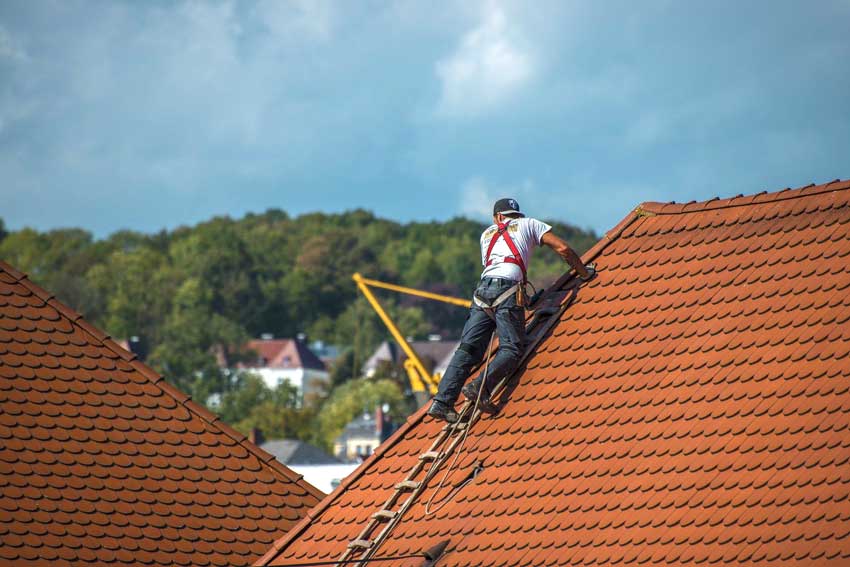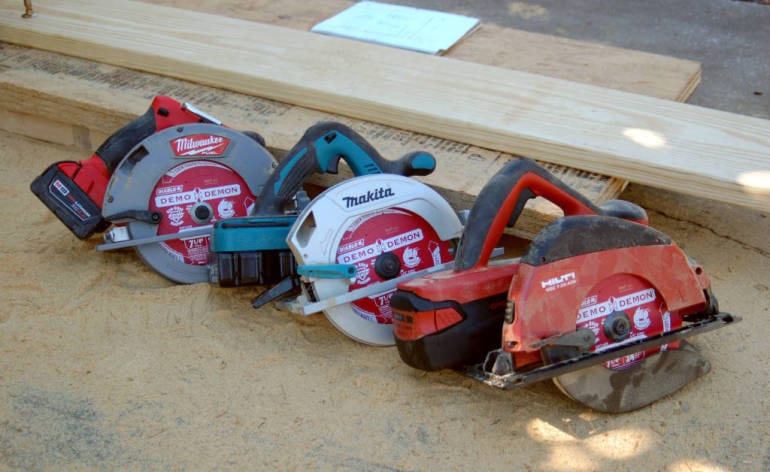Many of us make a living with power tools. Some of us are hobbyists. Still others fall somewhere in-between. Whatever the reason we use them, most of us would agree that power tools command our respect. Nothing illustrates that more than an unforeseen injury. To help you keep your guard up, we want to outline the Top 5 causes of power tool accidents.
Why Power Tool Accidents Happen
Lots of potential problems exist around power tools. You’ve got a product with either high RPM or torque and potentially a blade. If you don’t pay attention, any number of bad things can occur. We think many jobsite and workshop accidents are unnecessary. Our compiled list goes through our own personal experiences coupled with some in-depth research to help you understand what to look out for.
After all, accidents only happen to the other guy, right? That is, until one happens to you!
1. Removing the Table Saw Blade Guard
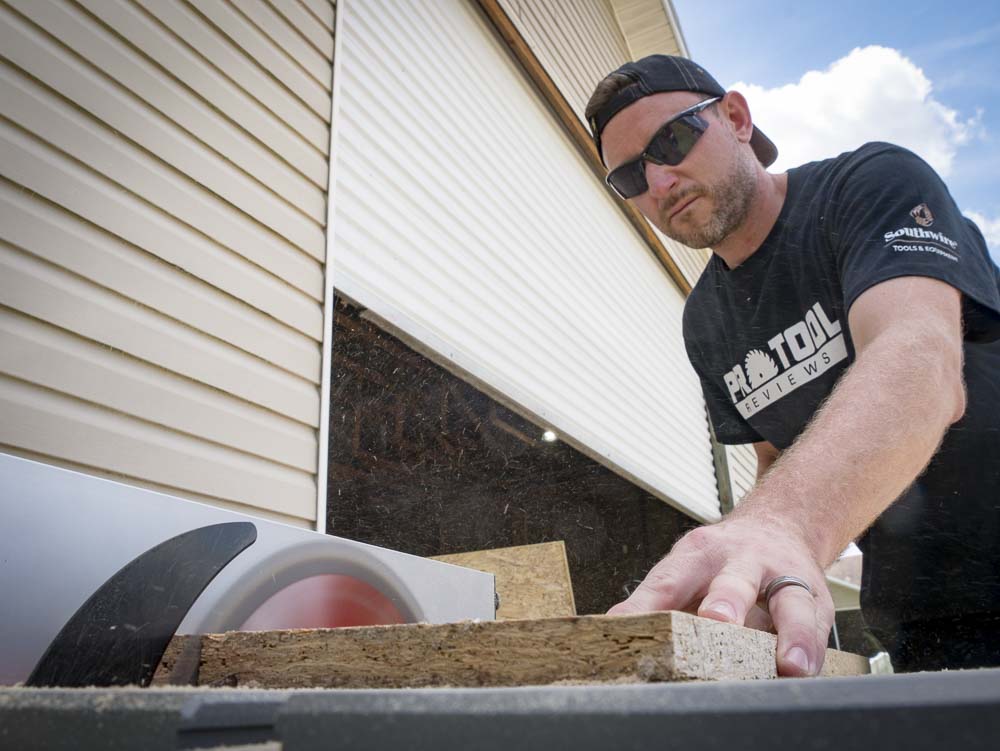
We know. We’ve heard it all. I can’t tell you how many online comments on our table saw reviews include something to the tune of “the first thing I’d do is rip off that blade guard!”
Yep, you’re a tough guy.
Here’s the thing, though. And I want to be perfectly clear about this…so listen carefully. 100% of all blade-contact injuries happen without a blade guard present. You have to try very hard to cut yourself with that blade guard in place. Sawstop saws? Flesh-detecting technology? You don’t need any of that if you just keep the blade guard in place.
With that said, some cuts require you to remove the blade guard due to clearances. In those situations, you always want to use auxiliary safety tools like a push stick and/or featherboard. Sometimes you can throw together a quick sacrificial jig to get the job done.
But don’t just rip off that blade guard and think it can’t happen to you. Of all the causes of power tool accidents, removing the table saw guard leads the pack. I’ve personally witnessed two very close friends come in contact with a blade and lose fingertips from using table saws improperly.
2. Trips and Falls from Cords or Messy Workflow
Have you ever been to a shop or site that just looks dangerous? Do you keep a shop or jobsite that looks dangerous? The expediency of not cleaning up or moving potential trip hazards is not worth the risk. Take five minutes to move cords, sweep up, and organize. It could save you countless hours of downtime—not to mention pain—if it keeps you, your employees, or your coworkers from having an accident.
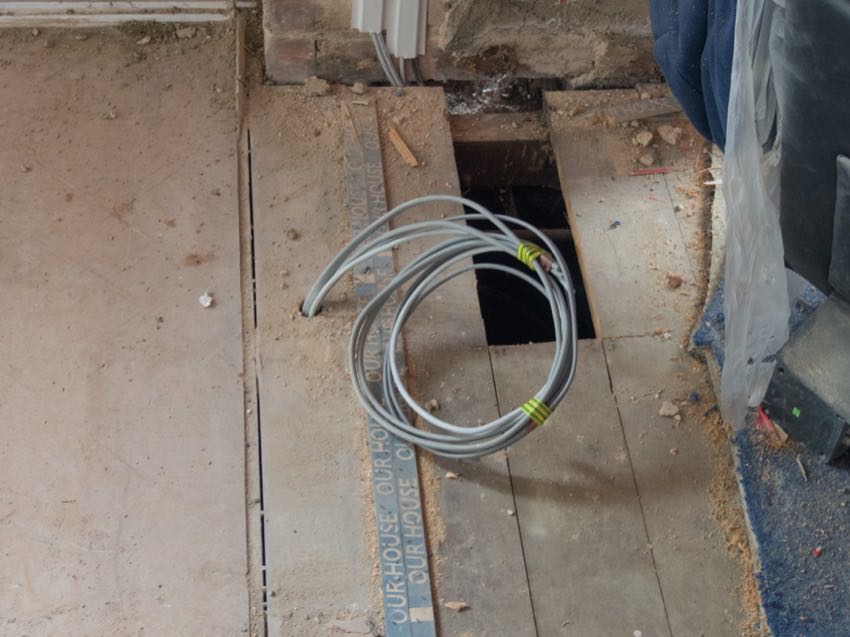
Watch out for protruding Romex lines, loose extension cords, and other materials that sit out in the open. You want to have clear pathways to move around the job site and eliminate things that could cause people to trip or stumble. Tripping doesn’t sound dangerous until it happens when you’re carrying tools or something heavy!
Of course, the more cordless power tools continue to supplant corded tools, we expect fewer cord-related accidents. Still, you can find plenty of things on a jobsite that present a trip hazard besides extension cords. Keep an eye out and you and your crew will be safer for it.
3. Lack of Cut Protection
Sharp is great for tools and bad for the skin. Avoiding cuts means having the right PPE, but also being aware and respectful of the materials and tools you work with.
Wear cut-protection gloves when appropriate. In particular, you want to use these when working with sheet metal or utility knives. A nice pair of cut-resistant gloves can be the difference between a small mistake on a workpiece and a trip to the ER.
A good pair of work boots are also essential for heavy-duty work when sharp objects can be stepped on. Look for puncture-resistant boots when working in areas where nails and other potential hazards exist that might penetrate the sole. Toe and metatarsal protection should be worn anywhere you could have to deal with heavy falling objects that could crush or pinch the foot.
Respect moving blades. You want to wear closed-toed when working with edgers, trimmers, and mowers. Other types of blades, like those found on circular saws, miter saws, and table saws should also be minded.
4. Shocks and Arcs
In our article Electrical wiring safety tips, we talk about taping switches in the off position, locking service panels, and leaving a note to warn others when working on a circuit. But arcs from panels aren’t the only causes of power tool accidents to avoid for electricians.
You can get severe burns or even die from the ignition of explosive gases. When working with any electrical equipment, take note of your surroundings and report any unknown chemicals or materials that you find in proximity. It’s always better to be safe than sorry. This also goes for using any power tools around flammable gases or liquids.
While most injuries involve some sort of high-voltage or high-current arc, smaller voltage shocks can also hurt you. An electrician up on a ladder can encounter a small electric shock and react in such a way as to lose their balance and fall. Always be aware of what could happen so you have a plan to deal with a worst-case scenario.
Lastly, corded power tools with exposed copper wire can deliver a shock especially when near water. Good tool maintenance is essential. This also includes taking note of any frays or potential shorts in your extension cords.
5. Inadequate Eye and Face Protection
We’ll let the picture below speak for itself. Protect your eyes and use face shields whenever working with abrasive cutting blades. That includes small angle grinders as well as larger concrete saws. The abrasive blades on these tools can come apart. Because they operate at such high RPM, the resulting piece of material has the mass and speed to do some serious damage.
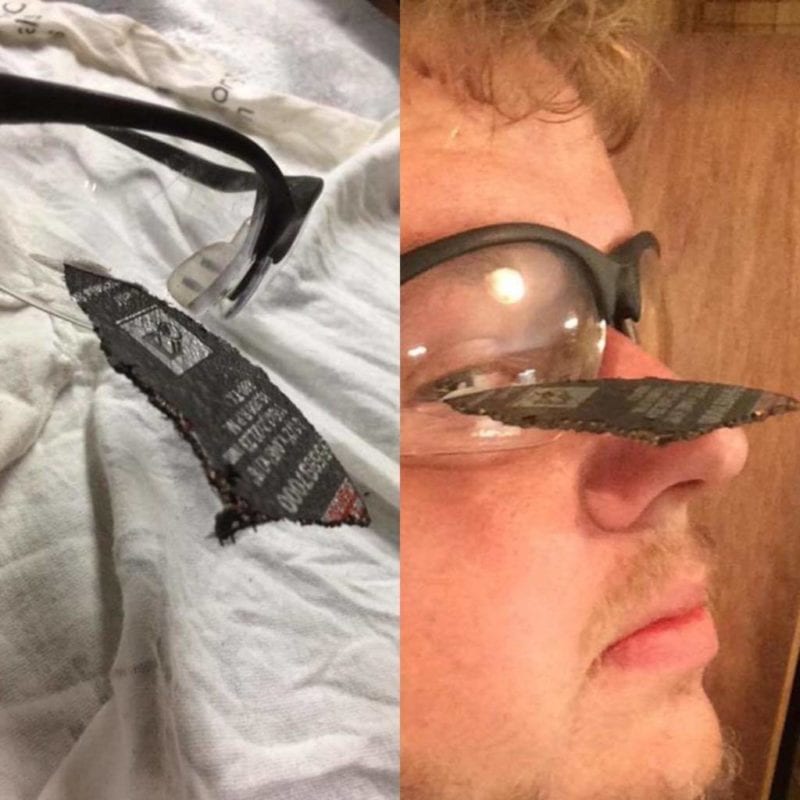
While eye protection takes up a large chunk of these injuries, wearing goggles or a pair of safety glasses does nothing for the rest of your face when using a grinder. At 10,000+ RPM, grinders create the potential for serious injury when a cutting wheel flies apart. A face shield is required in order to mitigate the damage that type of accessory failure can cause.
6. Not Stabilizing Yourself at Height
The #1 cause of worker injuries on a jobsite is fall hazards. You could also add improper ladder use to this. In either case, a related issue includes using a tool when not stabilized at height. You really don’t want to put yourself in a position to worry about dropping a power tool and keeping yourself from falling—at the same time.
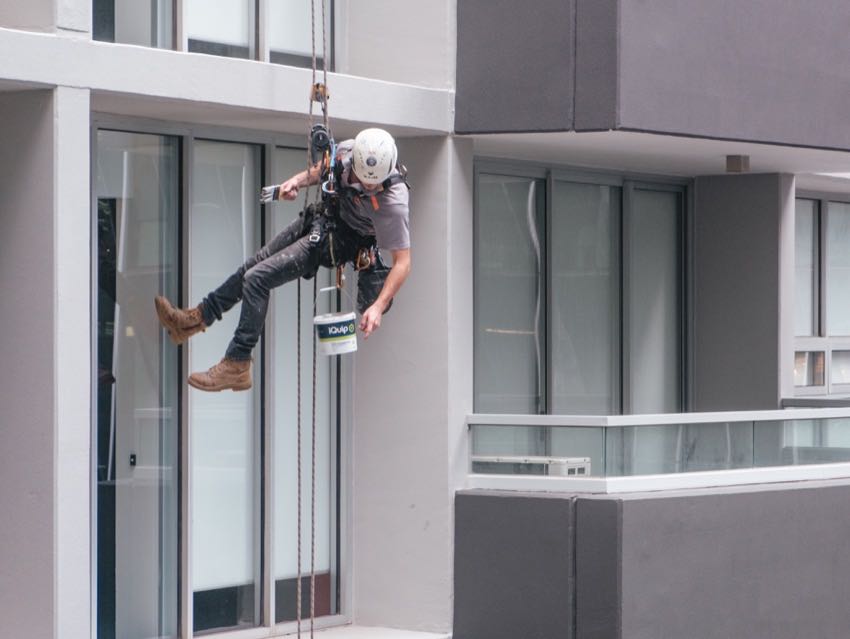
Take fall safety seriously. It actually doesn’t take much effort to stay in compliance. You may need to purchase harnesses and some fall protection equipment. You may need to understand how and when to build temporary railing for certain structures and jobs. It keeps you from having to worry as much about falling when you use power tools up in the air.
Of course, you also want to do well managing your personal balance. Don’t reach for or use that tool until you have yourself completely stable. You can prevent a lot of situations by simply taking your time and bracing yourself before you start to nail, hammer, drill, or cut.
7. Not Paying Attention
Ask most people who’ve ever been injured on the jobsite (or in the shop for that natter) and you’ll likely hear that they were distracted or not paying close attention. This occurs with both inexperienced users as well as Pros with decades on the job.
Familiarity with tools and techniques can cause you to pay less attention to the job at hand. You forget that you’re using a tool with a steel saw blade spinning at 3,500 RPM. You lose focus of the fact that you’re standing 20 feet up in the air on a ladder while holding a tool in one of your hands. You presume that someone switched off a breaker instead of verifying it with a meter.
Or, in my case, you can have someone working on a roof next to you that thinks it’s cool to slap a framing nailer down none-too-gently with the tip facing you. As the nail fired off and skipped across the shingled roof I counted myself fortunate that the nail simply skipped off my jeans as well instead of burying itself into my leg!
Not paying attention can get you hurt or worse. Try to perform a “reset” every time you start a job or pick up a tool. Remind yourself that you can’t take things for granted. In short—pay attention!
8. Lack of Humility
We add this last one because it affects so much of what happens at some point in an injury. Closely related to the item above, lack of humility shows up when you don’t ask for help when you need it. It appears when you start using a tool for which you aren’t properly trained. You can demonstrate lack of humility by simply trying to “beat the clock” to finish sooner or earlier than someone else.
Or, lack of humility can simply exhibit itself when we fail to respect the power tools we use on a daily basis. We may be overconfident. These tools represent an almost incredible amount of cutting, sawing, grinding, or driving power. They should have our respect.
When we presume we can’t be hurt…or that we can “blink fast enough” to not need safety glasses, we’re wearing our pride like a badge of honor. In reality, it can only hurt you. Ask anyone missing a few fingers or an eye as a result of a tool-related accident.
Wrapping It Up
This may not have been our most uplifting topic and article ever—but we hope it helps someone. Our hope is that you can be both productive and safe on the jobsite. It’s not only possible, it can end up defining you as a company or employer who takes the safety of his or her crew seriously.
In the end, we think that matters more than you may realize.
If we missed anything in this article, please feel free to leave a comment below. We’d love to hear from you regarding your experiences!

